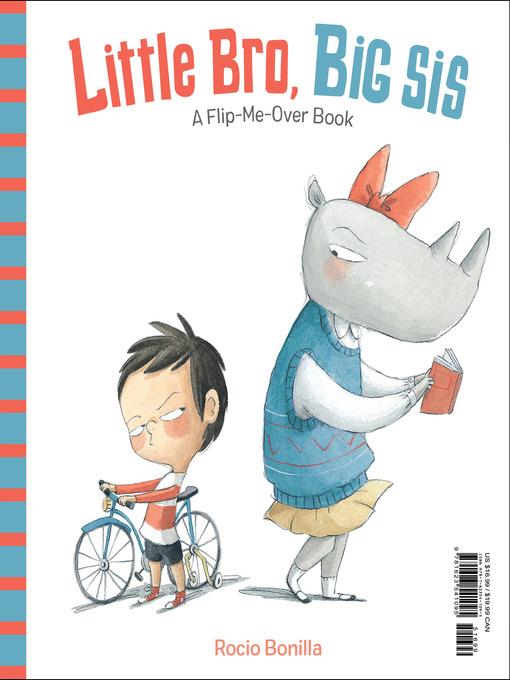
Little Bro, Big Sis
کتاب های مرتبط
- اطلاعات
- نقد و بررسی
- دیدگاه کاربران
نقد و بررسی

August 1, 2019
Experience both sides of sibling rivalry in this "flip-me-over" Spanish import. "I don't like my brother," exclaims the titular sis, pointing at her bro (depicted as a monkey). He's needy, annoying, and noisy. But sometimes she misses him. Maybe it's not so bad having a sibling--or so she thinks until she hears the wails of her family's new baby. The story ends there, at its center. Readers can flip the book over and then read it again from the brother's perspective. Cue the déjà vu: "I don't like my sister" exclaims bro (now a human), pointing at his sis (now a rhino). Brother has his own laundry list of complaints about his sister--and, of course, a few positive thoughts, too. And, well, readers will know how the rest of the story goes. The dual-perspective storytelling is an interesting conceit, particularly in the way it plays with the first-person-limited narration and animal-as-metaphor device. Repeated phrases and mirrored image placement create strong visual parallels between the two sides of the story. Bonilla's mixed-media illustrations emphasize expressive characters and cartoon sequences. Though bro is seen playing with dolls and wearing a dress, both siblings are rather stereotypical (and pretty one-note in their negativism). The siblings present white, but there is some racial diversity in the supporting cast. Clever but shallow. (Picture book. 4-7)
COPYRIGHT(2019) Kirkus Reviews, ALL RIGHTS RESERVED.

September 1, 2019
PreS-K-In this "flip-me-over" book, one side is from the big sister's perspective and the other side is from the little brother's. In his version, the older sister is depicted as a rhinoceros and a bully. In her version, the little brother is depicted as a monkey who is an annoying pain. But at the end of both stories, each sibling realizes that the other can be fun. The story ends with a twist. The last page shows a screaming baby, and depending on which side, either the brother or sister says, "Now what?" Illustrations and text work well together. For example, in the big sister version, text says, "He thinks he's funny, but he is very annoying." The sister, who is not amused, calmly brushes her teeth. Meanwhile, there are three scenes featuring the brother. He is sitting on the toilet with a scuba mask and snorkel, in another drawing he is wrapped in toilet paper as a mummy, and in another illustration he is in the tub playing wildly with a toy shark and rubber duck. Of course, the other side of the book has text and illustrations that show a very different perspective featuring an annoying sister. The beauty of this title is that there are two picture books in one. The story is lighthearted and fun and will resonate with siblings who can be frenemies. VERDICT Highly recommended for public libraries or preschools. The theme has universal appeal, and children with siblings especially will be able to relate to this story.-Robin Sofge, Prince William Public Library System, VA
Copyright 2019 School Library Journal, LLC Used with permission.

























دیدگاه کاربران